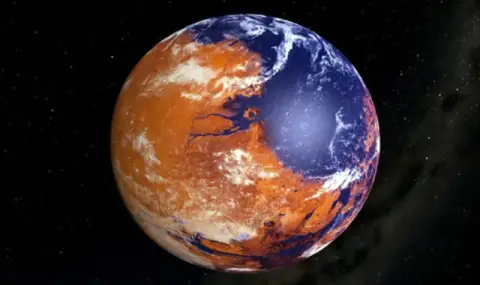Scientists' ideas about life on Mars have changed dramatically in less than 100 years of research. The Red Planet was first thought to be simply raw for life, like the Sahara on a summer afternoon, and then it became clear that biological life as we know it could not exist on it for at least the last few billion years. Life may have existed on Mars before, but how it died has been revealed by new findings by the Curiosity rover.
Long-term observations of Mars and remote sensing of its geology and soils suggest that approximately 4 billion years ago, this planet had a vast shallow ocean, lakes, rivers and streams. But since then the climate has changed dramatically and irreversibly. What happened on the planet and what is its climate, showed the latest findings of NASA's Curiosity rover in the region of the 154 km wide Gale Crater. This crater was formed as a result of a meteorite impact 3.5–3.8 billion years ago.
Examinations of rock samples from the crater floor by the rover's on-board instruments (Mars Sample Analysis and Tunable Laser Spectrometer) indicate that the crater contained water and therefore minerals characteristic of a wet environment, such as clays, sulfates, and carbonates , originated there. From the perspective of climate change assessment, carbonates formed from carbon and oxygen are considered the most valuable. Light isotopes of atoms quickly evaporate into the atmosphere, while heavy ones remain. By the ratio of one to the other, the climate can be judged, including the temperature, the acidity of the water, as well as the composition of the water and the atmosphere.
„Isotopic readings from these carbonates show extreme amounts of evaporation, suggesting that these carbonates likely formed in a climate that could only temporarily support liquid water,” says NASA's David Burt. “Our samples do not suggest the existence of an ancient living environment (biosphere) on the surface of Mars, although this does not rule out the possibility of the existence of a subsurface or surface biosphere that began and ended before the formation of these carbonates.”
Carbonate states indicate that habitable Mars died in two processes simultaneously or separately. First, periodic intense “outbursts“ of moisture evaporation. Second, the water begins to freeze and, together with evaporation, this leads to an excessive increase in its salinity. In such an environment, nothing known to us could survive, not even bacteria. There remains hope for searching for life (at least microbial) below the surface of Mars at depth, but it is unlikely that Earth science will be able to do so in the next 10-15 years.
